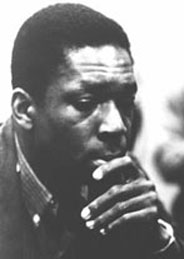Ahh... so I went to the Chinese food place by my apartment today. I haven't had real Chinese food in so long, I forgot how good it was. 'Got a chicken and vegetable combination. Good stuff!
So I wanted to talk a little about "jazz" music today. I don't really like to call it "jazz." In fact, few musicians, especially from the third stream/bebop era, would ever like to think of themselves as "jazz" musicians. It was kind of a demeaning term, in the light of some social circles' use of it. I like to think of it as American Classical Music, as grandiloquent as that sounds. I digress, though...
It's been a good while since I've explained theory, since I don't seem to have any students these days, but I'd like to discuss, for a bit, jazz harmony. Even if you're a newbie when it comes to music, you've probably heard of the most common chord progression, the ii-V-I turnaround. Believe it or not, it's probably even more common than the I-IV-V change you hear in music all the time, as hard as that is to believe.
The guy depicted in the picture above is John Coltrane, and he had a very unique way of perceiving harmony. In fact, he came up with harmonic innovations so often, that he got bored with it altogether, and decided to take a more modal approach later in his career. One sequence he used often was called, "Coltrane Changes." You take the simple ii-V-I, and add in a more complex series of chords, based off of a certain interpretation of thirds within the context of the Circle of Fifths.
Let's say you have:
Gm7 - C7 - FM7
A ii-V-I sequence in the key of F major. Let's pretend that each chord gets four beats, with one additional FM7 at the end to make it a four bar progression. You want to turn that sequence all jazzy, ala Coltrane? Check it.
Gm7 - Ab7 | Db - E7 | A - C7 | F
The interval relationship between those chords is: minor second, perfect fifth, minor third, perfect fifth, minor third, perfect fifth. Whew... this theory stuff is a headache, eh? It involves a lot of math, and I damn sure am not good with math. But, if you think about the chords, in terms of their interval relationship, then it may be easier for you to get. Here's an example of the Coltrane Changes in action:
Anyway, hope this was informative, to some degree. And sorry I was confusing, or if I confused anything. There's probably some music harmony sticklers out there who could teach me a thing or two. =p


Not confusing at all, good read
ReplyDelete....still on that smoky salloon. darn the sounds.
ReplyDeleteNo where around here has good Chinese food... sucks :(
ReplyDeleteNice read, good song too.
ReplyDeleteWell it's reall y difficult to read, but still not bad. Follow you
ReplyDeleteI like the song, will look up more music from them.
ReplyDeletemy grandpa learned jazz from the polish in chicago speak-easy's back in the day... very cool stuff my man... keep it comin. i'll listen to it for a long time while painting
ReplyDeletevery enlightening... thanks for the good read!
ReplyDeleteYou seem like a guy who knows a lot about Jazz, than just the stereotype version I imagined. followed :)
ReplyDelete